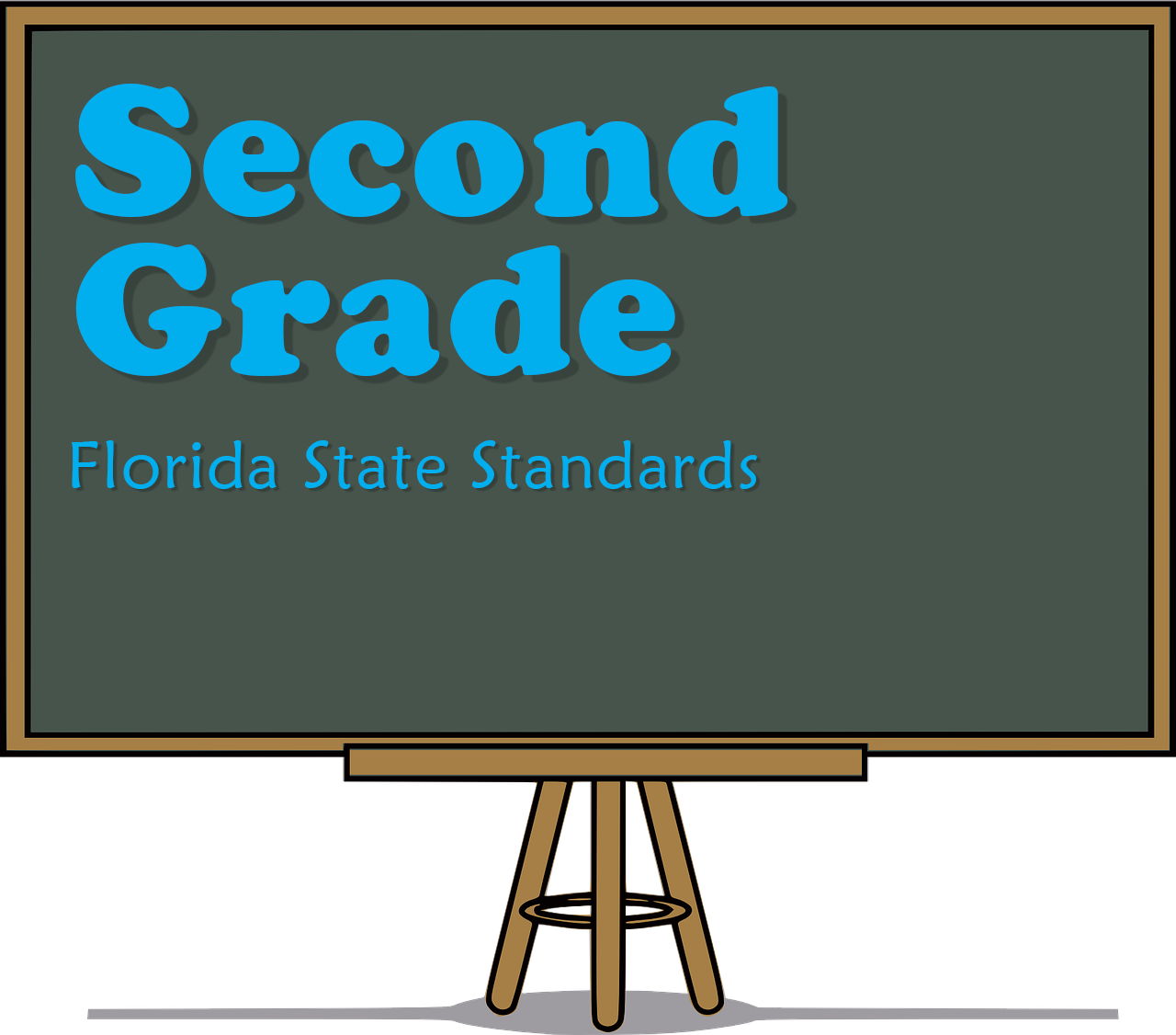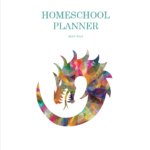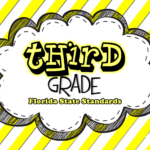We know that for many people, one of the first concerns they have with homeschooling is “falling behind.” While seasoned homeschoolers will tell you, there’s no such thing (all kids learn at their own pace, whether at home or school, and homeschooling gives you the freedom to move at that pace); sometimes it’s comforting to check-in with what’s required in the public schools. Reading through the state standards can be overwhelming if you aren’t a teacher, so we’ve condensed them into easy to read and understand plain language. You can access the original state standards on CPALMS.org
Use can use these standards to help you decide what level of curriculum to use, to keep track of gained skills during the year, or to assess progress throughout the year.
Download the Checklist for Second Grade Florida State Standards.
ENGLISH LANGUAGE ARTS (ELA), SECOND GRADE
WRITING
- Legible printing skills
SPELLING
- Consult reference materials to check and correct spelling
- Recognize spelling patterns in written words, including various letter combinations for similar sounds (boy/boil).
GRAMMAR WHEN WRITING OR SPEAKING
- Form and use past tense verbs
- Produce, expand, reword, and rearrange sentences (The boy watched a movie. The little boy watched the movie. The action movie was watched by the little boy)
- Introduction to formal and informal uses of English
SENTENCE STRUCTURE
- Continued expansion of understanding of correct use of capitalization, including proper nouns
- Continued expansion of understanding of correct comma usage, including in greetings and letters
- Apostrophe use in contractions and possessives
VOCABULARY
- Consult reference materials to find or clarify the meaning of words or phrases
- Expanded application of using context as a clue to the meaning of unknown words and phrases
- Expanded application of using affixes, root words, similar words, and compound words to decode definition
- Expanded vocabulary appropriate to grade level
READING
- Recognize and apply common multi-letter phonograms/letter combinations for vowel sounds
- Decode two-syllable words
- Decode words with common prefixes and suffixes
- Read on-level text with purpose and understanding, orally and silently, with appropriate accuracy, rate, and expression
- Self correct word recognition and understanding by rereading
- Read on-level text with appropriate comprehension, rate, and expression
READING COMPREHENSION
- Explain how images contribute to and clarify a text
- Describe how details are used to support points in text
- Compare and contrast texts with increasing fluency, including non-fiction and two or more versions of the same story
- Ask who, what, where, when, why, and how to demonstrate understanding of a text
- Multi-paragraph texts: identify the main topic, as well as the focus of specific paragraphs
- Describe the connection between a series of characters, events, ideas, or steps within a text
- Recount stories, including fables and tales from diverse cultures, to identify a message, lesson, or moral
- Describe story structure, including the relationship between beginning, middle, and ending
- Character analysis: describe how characters react to events, have differing points of view, etc.
- Identify how words or phrases supply rhythm and meaning in poetry, songs, or stories (rhymes, alliteration, etc)
- Participate in grade-appropriate discussions about texts, including building on the comments of others, asking questions and for clarification, and listening appropriately
COMPOSITION
- Retell stories or experiences with appropriate facts and details, speaking or writing in coherent and in complete sentences
- Write opinion pieces about topics or books, including clearly stating opinion, as well as supporting reasons, and conclusion
- Write informative texts including an introduction, facts, and conclusion
- Write narratives recounting an event, including details to describe actions, thoughts, and feelings; temporal words to signal order; and closure
- Continue expanding on revising and editing skills, including obtaining support and feedback from adults and peers
- Using a variety of digital tools, produce/publish writing or compositions
- Introduction to individual and shared research and writing projects
Download the Checklist for Second Grade Florida State Standards.
MATH, SECOND GRADE
GEOMETRY
- Identify, draw, and construct regular polygons and three-dimensional shapes
- Partition two-dimensional shapes into equal shares and describe the sections as fractions
MEASUREMENT
- Estimate lengths using inches, feet, yards, centimeters, and meters
- Understand how to use appropriate tools measure length to the nearest inch, foot, centimeter, or meter
- Compare objects using standard measurements
- Use addition and subtraction within 100 to solve word problems involving lengths that are given in the same unit, including the use of drawings (such as of rulers)
TIME
- Tell and write time to the nearest 5 minutes using analog and digital clocks
MONEY
- Use currency symbols appropriately
- Identify the value of coins and paper currency
- Compute the value of any combination of coins within $1.00 and any combination of dollar bills
- Relate the value of coins to other coin and dollar combinations (two nickels equal one dime)
- Solve one and two step word problems involving dollar bills up to $100 or coins, including addition, subtraction, and grouping
PLACE VALUE/NUMBER FLUENCY
- Represent whole numbers from 0 on a number line, identifying positions of other whole numbers, and using this to find sums and differences
- Understand the hundreds, tens, and ones positions of a three-digit number, including ability to articulate place value and the meaning of decomposing or composing numbers
- Recognize the relationship between ones, a unit of ten, and a unit of one hundred (ten ones equals one ten, etc.)
- Count, read, write, and represent within 1,000, including skip counting by 5, 10, and 100
- Compare three-digit numbers using symbols (<, >, =)
EQUATIONS
- Fluently add and subtract within 100 using strategies based on place value, properties of operations, and/or the relationship between addition and subtraction
- Add up to four two-digit numbers
- Within 1000, add three-digit numbers, identifying strategies based on place value to compose hundred when adding tens or decompose when doing subtraction. Articulate method and reasoning of computation strategy.
- Mentally add or subtract 10 or 100 to a given number
- Solve one and two-step word problems within 100, including addition, subtraction, combining, taking apart, and comparing with unknowns in all positions.
- Familiarity with using a symbol for the unknown number to represent the problem
- Know from memory all sums of two one-digit numbers (within 20)
- Determine within 20 whether a number is even or odd; relate even and odd concepts to an equation expressing an even number as a sum of two equal addends
- Identify the unknown whole number in an equation relating four or more whole numbers, (such as what makes the equation true 37+10+10=____+18
DATA ANALYSIS
- Draw picture and bar graphs with a single-unit scale to represent a data set with up to four categories. Solve simple problems and make simple comparisons with the information
Download the Checklist for Second Grade Florida State Standards.



